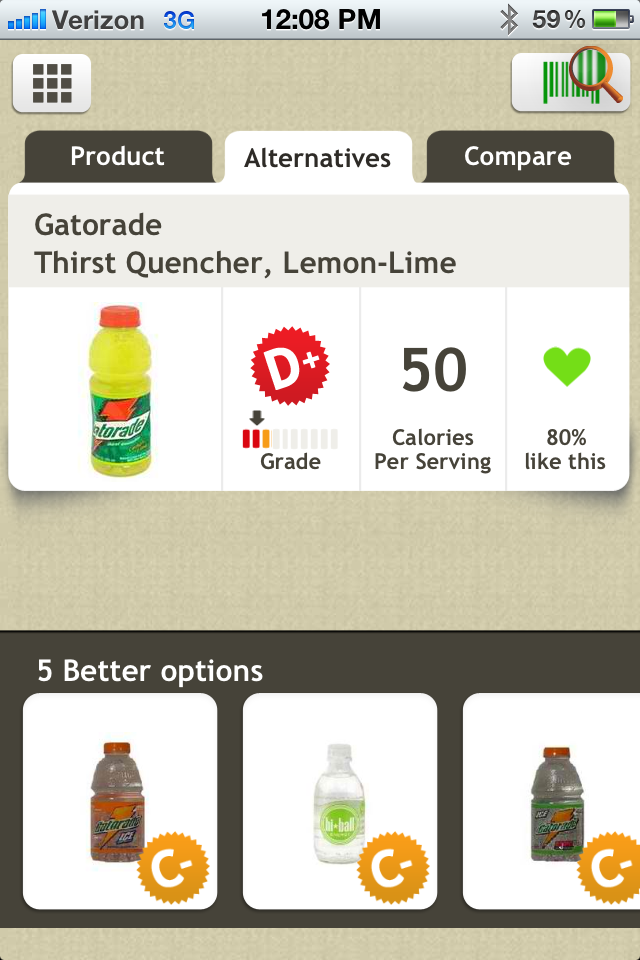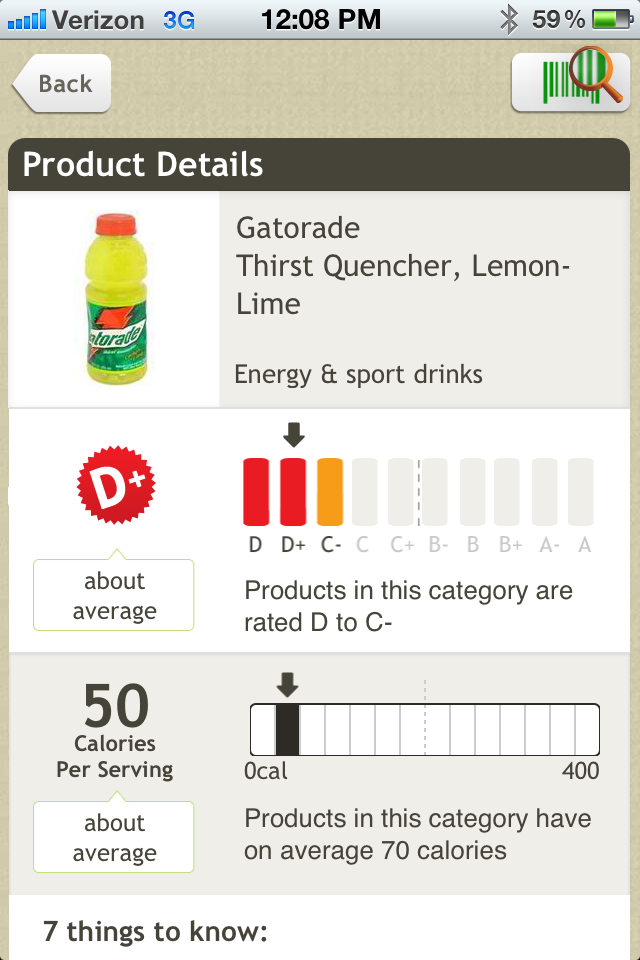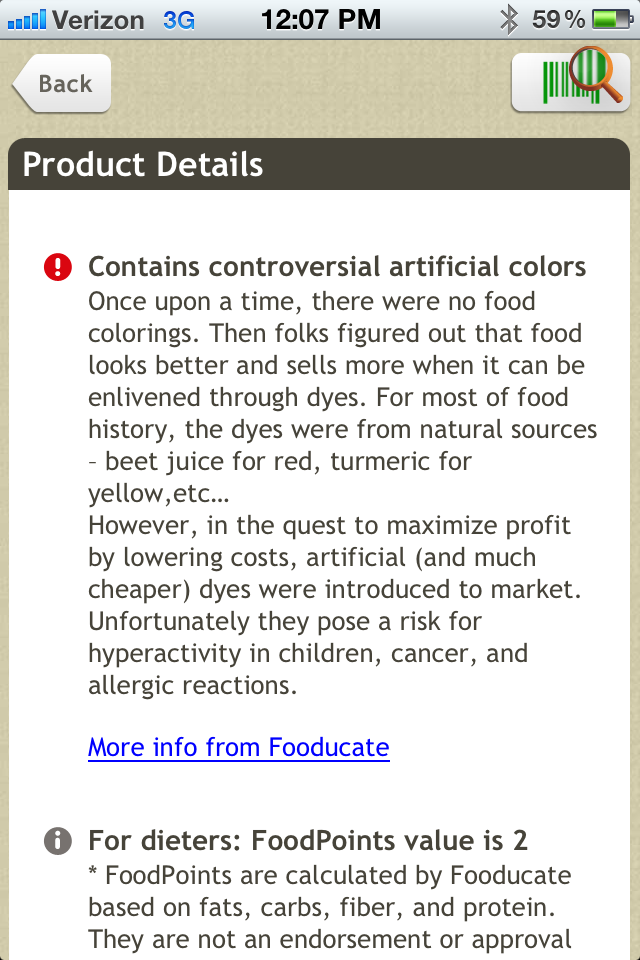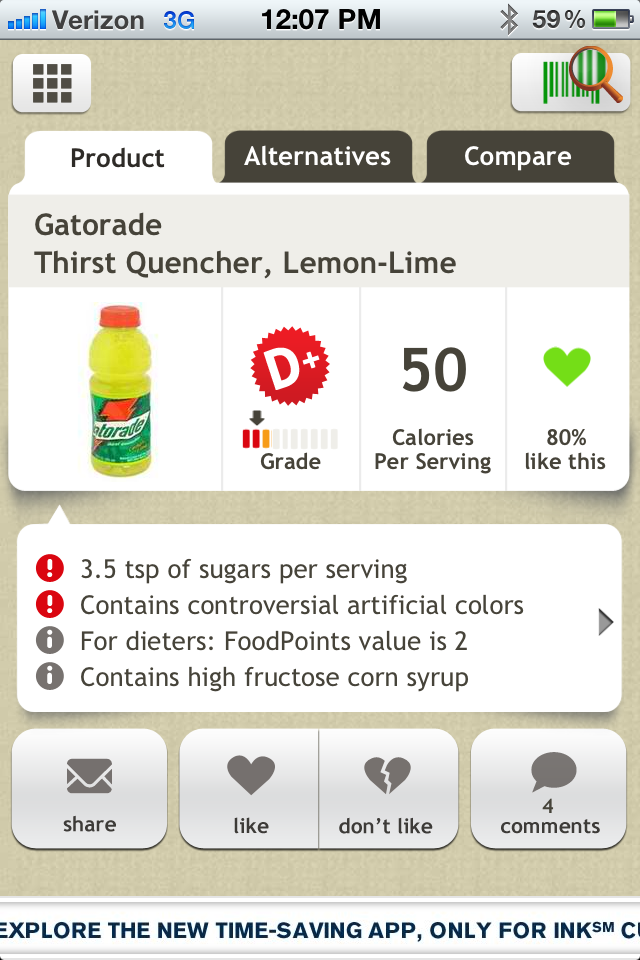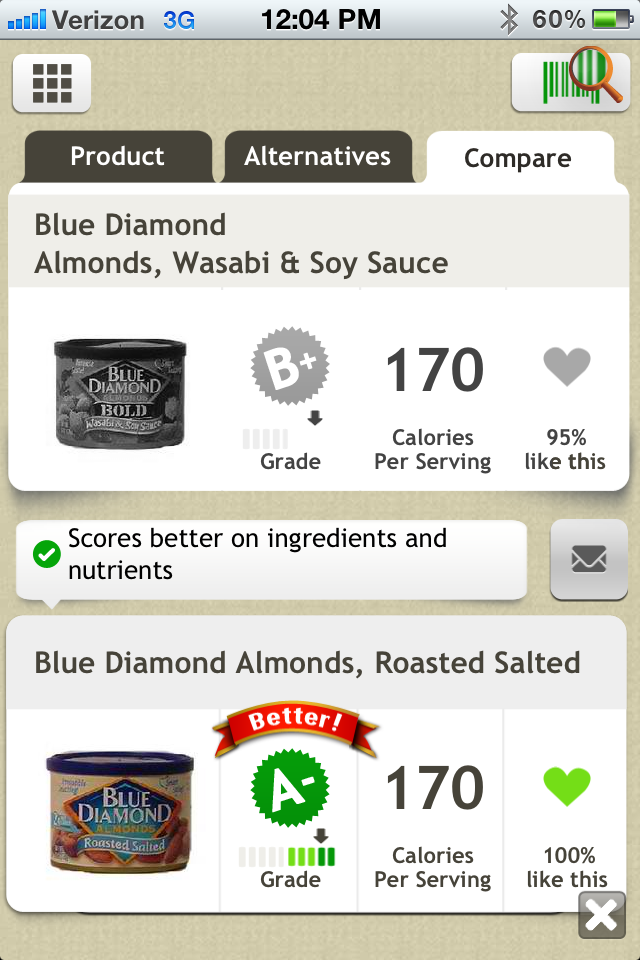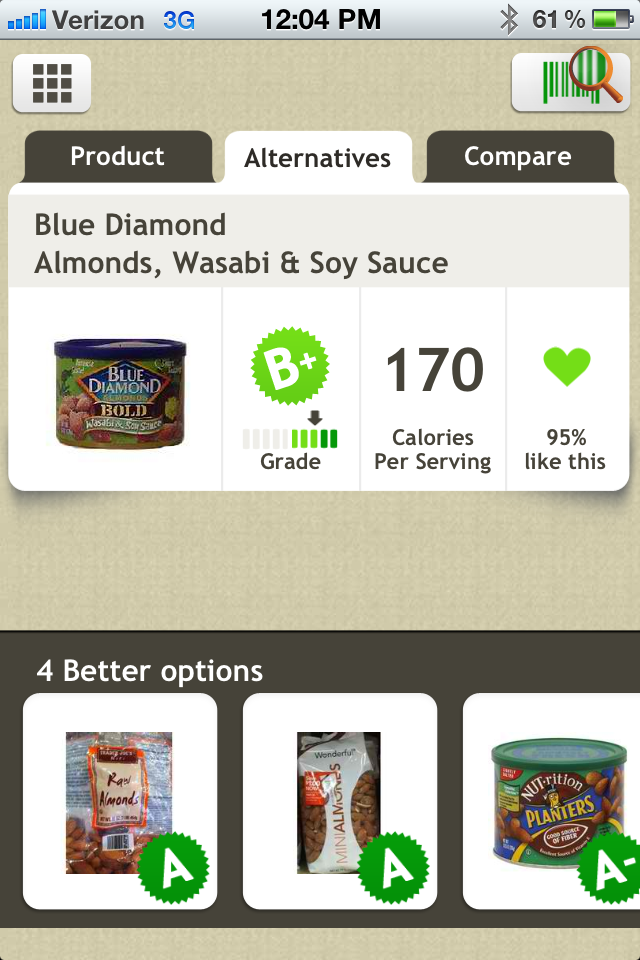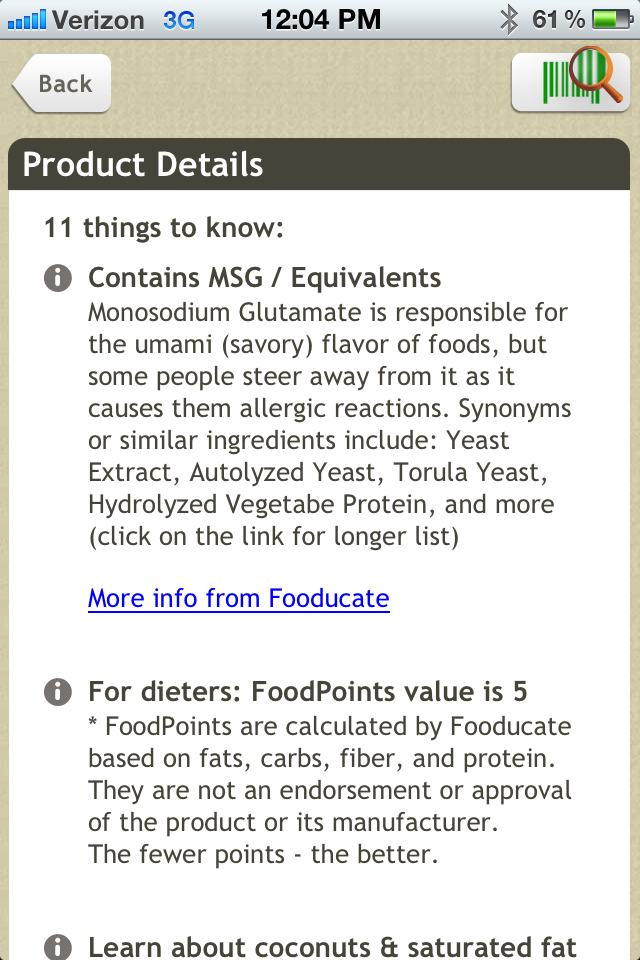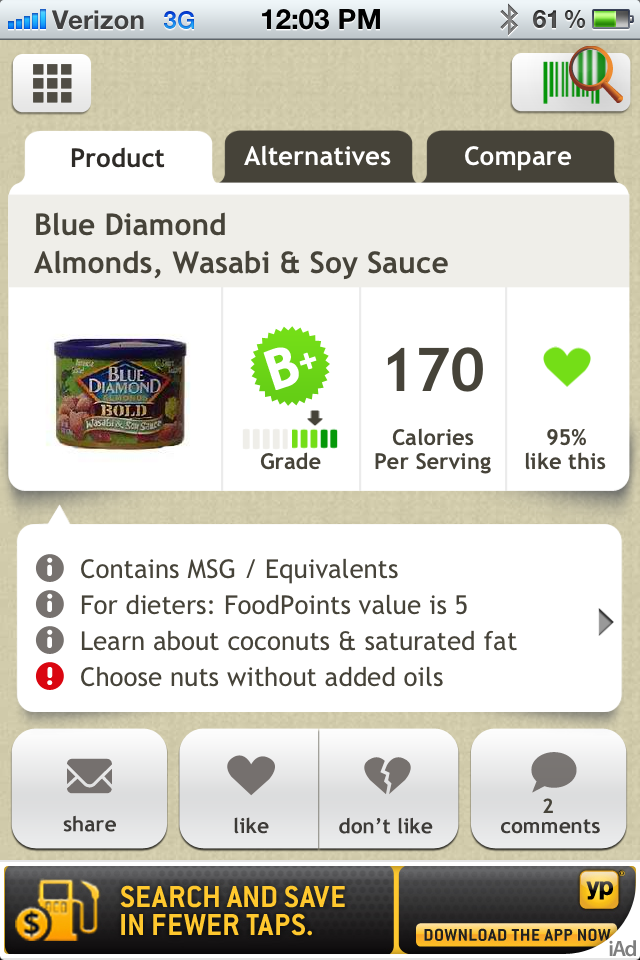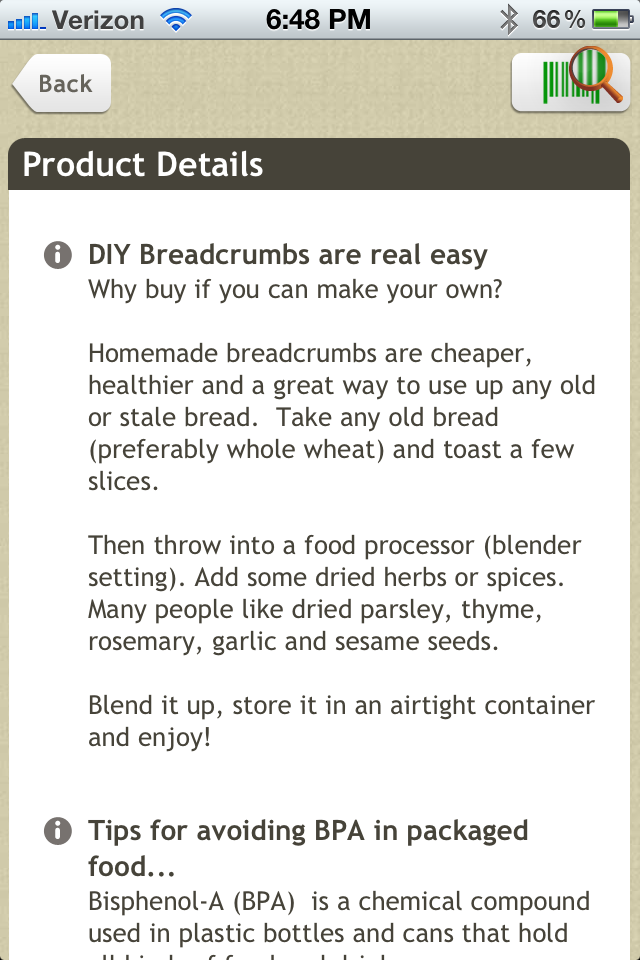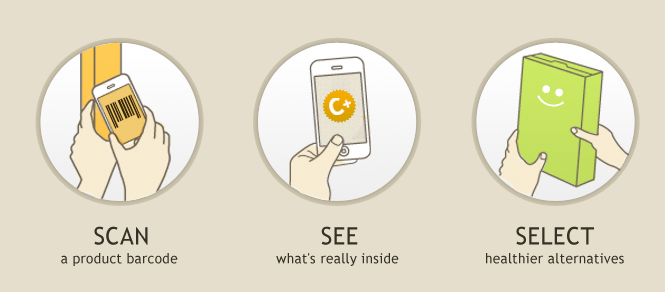
I love almonds. If we are what we eat, I’m a Hershey’s Kiss and a handful of shredded coconut away from becoming an Almond Joy bar. When we’re grocery shopping, Sarah is always trying to find which nuts are on sale and keep us well-stocked. We do try to compare the labels and make sure we’re not getting nuts with tons of additives, but it isn’t always easy to make the right call when they all sound the same. That’s where Fooducate is an incredibly useful shopping tool!

Fooducate scans barcodes and gives you a breakdown of the ingredients and nutrients. Then it goes one step further, explaining WHY certain choices are good or bad, including explanations of additives, alerts when a small package has multiple servings, and even alternate healthier choices. It breaks the whole thing down with a simple letter grade on top and more details below. That makes it perfect in the grocery store, where you might just want a quick check on an item, as well as when you have more time to really study what you’re eating. If for some reason Fooducate can’t find the food you scanned (it didn’t know what Gu was, for example) it asks you to snap pictures of the front, back, and ingredients list so they can upload it to the database.

My favorite feature, though, is the comparison option. You can scan two choices (say, two different kinds of nuts) and then Fooducate lays out which one is the better food. Sarah and I do that all the time on our own, and I love being able to pull up the extra data that the app provides. Just like with a regular scan, Fooducate justifies the suggestions, explaining in my test example that the ingredients and nutrients were significantly better in one choice over the other. I was surprised when I scanned a container of breadcrumbs and the app gave me a basic breadcrumbs recipe and suggestions on why making my own would be tastier AND healthier. Basically, it gives you tools to better understand your food.

One other great touch is that Fooducate offers alternate choices, in many cases from the same manufacturer as the scanned food item. I scanned a Gatorade today, and it predictably told me Gatorade is terrible for me. Under the alternatives, one of the suggestions was G2, a lower-calorie Gatorade option. It got a C-, instead of the D original Gatorade received. But it shows this app functions in the real world, where ideal choices aren’t available, or where you may just really want a sports drink, or a candy bar or some other indulgence that you know isn’t great for you. In that case, at least you can make the best of the bad choices available. I also noticed this is helpful when you’re looking at brands that make multiple products; flavored oatmeal returns the suggestion that unflavored choices from the same manufacturer are a better choice. That’s especially handy in the grocery store since you don’t have to go more than one or two steps to find the better option.
Michael Pollan in “The Omnivore’s Dilemma” argues we need to ‘eat real food’. I agree and try to hew to that, but it’s tough when you need to buy some items pre-packaged. Fooducate does a nice job of bridging the modern world with that very logical philosophy, breaking down what is and isn’t real, what is and isn’t healthy, and what should and shouldn’t be landing in your grocery cart!
MSRP: Free from iTunes/Apple App Store (also available on Android)
What I Like: Educates you on more than just calories in/calories out; Helps guide your choices realistically; Offers a clear grading system and justification for ratings
What Needs Improvement: Nothing
